Exquisite architecture influenced by the blend of Islamic and medieval Christian design, Roman ruins on rolling landscapes, regional wine and food, traditions held fast like flamenco dance and people who share the joy of living are all reasons to visit Andalusia. (Pronounced ahn-dah-loo-thee-ah in Spain.) The region rests in southern Spain with long beach coastlines on the Atlantic and Mediterranean.
IN THIS GUIDE:
- Travel Tips
- Málaga
- Ronda
- Córdoba
- Seville
- Jerez de la Frontera
- Marbella
- …and more
How to Get to Andalusia
Three international airports serve Andalucia: Málaga (AGP), Seville (SVQ) and Jerez de Frontera (XRY). Watch for cheap flights from London Heathrow (LHR) to Málaga. High-speed trains also connect southern Spain to the Madrid (MAD) airport.
Things to Know Before You Go
Most shops and businesses close between 2 pm and 4 pm for siesta. Regarding weather and crowds, May and October are the best months to visit. Public transportation is excellent and affordable. In Andalusia, the word bodega can mean a winery, wine cellar and/or bar.
How To Get Around Southern Spain
Spain has more high-speed railway tracks than anywhere in Europe, making train travel convenient, comfortable and affordable. Spain’s highway system is also modern so check here for some of the best rental car rates in Spain offered through Kayak.
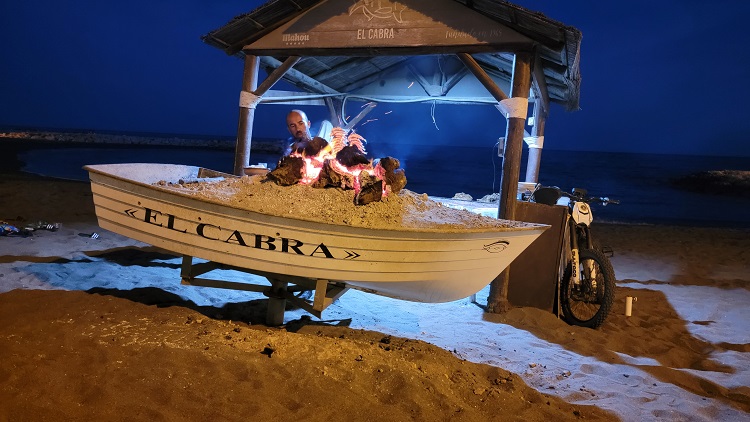
Day One and Two: Málaga
Where to Stay
Like any city of 592,000, Málaga offers accommodations in every category, including country bed and breakfasts, beach resorts, hostels and high-end hotels. Affordable beds include TOC Hostel Málaga, whereas Hotel Castilla Guerrero is midrange, with Hotel Castillo De Santa Catalinas and Gran Hotel Miramar GL being top of the line.
Where to Experience Wine
The wines of the Málaga DO (Denomination of Origin) are primarily crafted with the white varieties Pedro Ximénez and Moscatel. The sweet, still wines are made from over-ripe or raisined grapes. Taste two wines with DO Málaga and DO Sierras de Málaga designations at Málaga Wine Museum, where you’ll ponder art-quality bottle labels and posters and come to know the geography and wine production of the region. At El Templo De Vino, a trendy wine cellar and tasting room, you’ll swirl, sniff and sip the wines from small producers, the house’s specialty.
Where to Eat
In the shadow of Alcanzar, Bodega El Pimpi has been attracting foodies with its focus on local culture and gastronomy since 1971. Soulful flamenco guitar chords waft from the patio while you savor local delicacies such as Malagueña salad with potato, orange and baked cod or chipirones a la Malagueña, Málaga-style baby squid.
In the evenings, amble along Málaga’s beaches, and you’ll bump into chiringuito eateries. Make sure to try this full-on Málaga beach food experience that began when fishermen broiled freshly-caught sardines on skewers over open fires. Today you’ll get the fresh catch prepared in the same way. Ask for espetos. For tapas, you can’t go wrong at Bar Pepe y Pepa or El Tapeo de Cervantes.
Additional Things to Do
Stroll up the cobblestone stairs and through intimate passageways that connect secret gardens and water features built in the early 11th century as Caliphate royal courts. The Alcazaba y Castillo de Gibralfaro, sprawling up and over the hill in the center of Málaga, is a palace and defensive fortification integrated into today’s city. The medieval Málaga Cathedral and the artsy Museo Carmen Thyssen Málaga are a ten-minute stroll away. Although it’s difficult to see all that the port town of Málaga has to offer in just two days, you could take a side trip to Granada, home of the Alhambra.
If you’re still looking for more things to do when visiting Málaga, be sure to check out our guide to some of the most authentic experiences to have in and around the city.
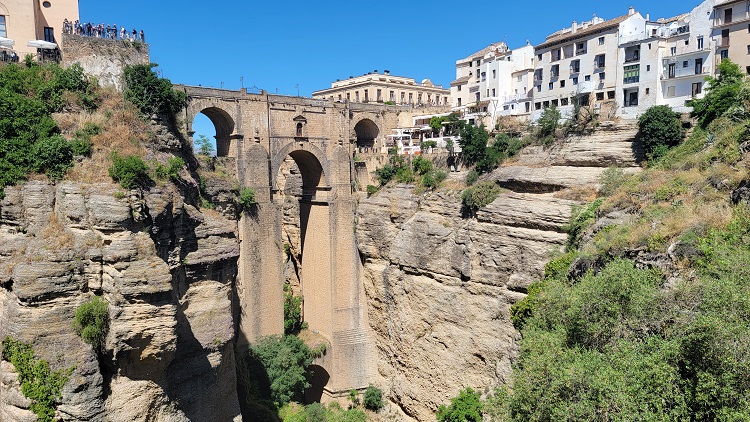
Day Three: Ronda
Because nature preserves surround Ronda, the journey alone is worth a stopover in the medieval town balanced at the edge of mountain ravines. Traditional Andalusian white houses seem to cling over the abyss, which is bridged by one of Spain’s most photographed architectural features: Puente Nuevo, the ‘new bridge.’ However, the stone edifice is hardly new, with construction completed in 1793.
Where to Stay
Stay at Parador de Ronda for its spectacular location beside the town’s emblematic Puente Nuevo. Mountain-view or city-view, each room has its own balcony. The ritzy hotel is part of the Paradores system inaugurated by the Spanish government in 1928 to preserve national heritage by repurposing prominent historic buildings. Bonus: restaurants in every Parador offer regional gastronomy.
Where to Experience Wine
Why not buy your wine for the night at Centro Integral del Vino de Ronda, a wine museum? Ronda’s wine-making history dates back over 2000 years, when Romans cultivated vines and produced wine here.
Today vintner Joaquin Fernández wants you to enjoy wine just as any true Andalusian does. So besides exceptional wines, he’s created Bodega Joaquín Fernández in the countryside, where enthusiasts can sit back and enjoy views and traditional foods. “I don’t let anything unnatural touch my wine. Even the corks are made from the best quality cork you can get,” says Fernández of his ecologically produced Finca Los Frutales wines.
Where to Eat
Walk a few blocks past the restaurants that line “El Tajo,” the cliff near Puente Nuevo frequented by the tourist crowd. Better experiences and moderate prices await at mom-and-pops like Sensur Gastrobar, Restaurante Tropicana or Entre Vinos.
Additional Things to Do
Author Ernest Hemingway recommended that if you saw only one bullfight, you should see it in Spain’s oldest existing bullring Plaza de Toros in Ronda. Unfortunately, however, bullfights happen only once per year in September. You can, nonetheless, tour the architectural marvel most days. No need to know Spanish to understand the expressive flamenco performers at Ronda Flamenca.
RELATED: Ronda Spain in Pictures: Top Things to Do
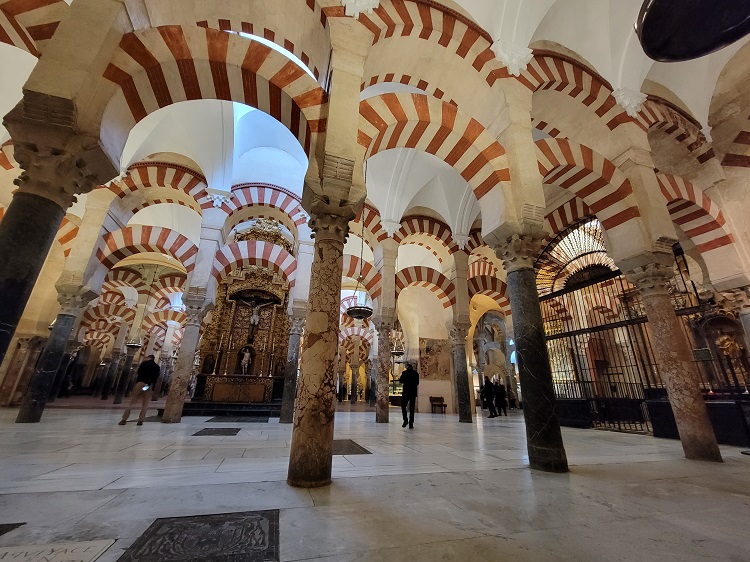
Day Four and Five: Córdoba
Where to Stay
You’ll want to stay in Córdoba’s charming Jewish Quarter, which is in the heart of the Middle Ages capital. La Llave de la Judería Hotel Boutique and Las Casas de la Judería are four short blocks away from the impressive Mezquita, a UNESCO World Heritage Site.
Where to Experience Wine
Discover the wines from the region of Montilla-Moriles on a wine tasting tour or go it alone to Bodegas Lagar Blanco, an hour out of the city. In town, Bar Los Cuatro Gatos exudes a neighborhood vibe, and if you’re willing to greet others with a “Buenas tardes” or “Como te va la vida?” you’re sure to meet friendly locals.
Where to Eat
Try salmorejo, the city’s most famous dish, at El Rincón de Carmen. The thick, cold tomato-based soup can also be found at La Salmoreteca, a booth inside Mercado Victoria, the lively gastro market. Cafe – Bar La Cavea does a terrific job with another regional favorite, Berenjenas fritas con miel de caña (fried aubergines with cane honey).
Additional Things to Do
Prepare to be bedazzled by the stunning amalgam of Roman, Islamic and early Christian architecture at the Mezquita, the Mosque-Cathedral of Córdoba. Arabs who ruled Spain from 711-1492 built their Mosque and orange gardens over a Visigothic Christian church. The Mosque was converted to a Cathedral in 1236 after the Christian forces of Castile regained control of Córdoba. And if your senses aren’t yet overloaded, take in the Cordoba Royal Stables, where Andalusian horses and their riders seem to float above the ground. Don’t pass by the Museo Arqueológico de Córdoba. Pilgrims of the Camino de Santiago will want to pay homage to the saint at Iglesia de Santiago.
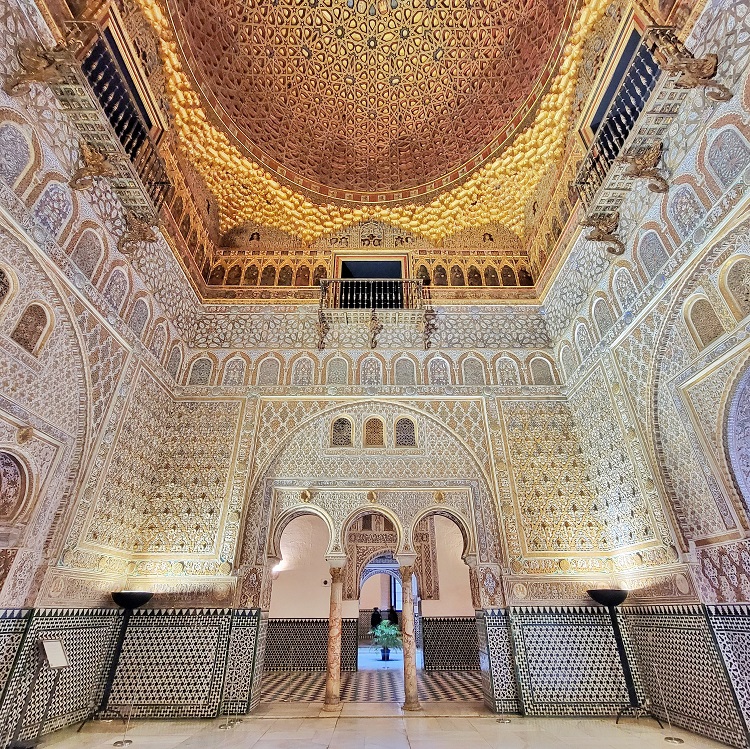
Day Six and Seven: Seville
Where to Stay
Seville is a walking town, so you’ll appreciate centrally-located digs like the affordable New Samay Hostel, the mid-priced Hotel Doña María, or the luxurious EME Catedral Hotel in a 16th-century Andalusian building. From any of these, you’ll saunter shady, orange-tree-lined boulevards filled with scents of jasmine and orange.
Where to Experience Wine
With over three thousand Seville tapas and wine bars, knowing where to jump in can be paralyzing. Make a start at Vineria San Telmo, known for its extensive wine selection—try the regional orange wine for dessert. Or review the tasting events calendar at Flor de Sal. Later, savor Andalucian sherry wine paired with acorn-fed Iberian ham during an evening Seville Tapas and Flamenco Tour led by an expert.
Where to Eat
Sample solomillo al whisky, pork sirloin in whiskey sauce at Casa Pepe Hillo. Food-focused travelers will want to try another Sevillian specialty, espinacas con garbanzos, spinach, with chickpeas. For that, reserve a table at El Rinconcillo, celebrated for its traditional cuisine. The unassuming La Flor de mi Viña is said to have some of the city’s best cola de toro, sometimes called rabo de torro or bull’s tail stew.
Additional Things to Do
Pay your respects to Christopher Columbus, who lays in a Renaissance-style tomb inside the massive Cathedral of Seville. The Cathedral, the world’s largest Gothic building, is noteworthy for its Giralda or belltower, a converted minaret of Seville’s Mezquita Mayor that once stood there. Trot up the tower via ramps engineered for the horses that carried muezzins to the top to proclaim the Islamic call to prayer.
Feel Seville’s blend of cultures in the Cathedral’s peaceful Patio de los Naranjos, also preserved from the Mosque. Illustrative of the weave of Islamic and Christian symbolism, the Gothic Door of Mercy, which connects the Cathedral to the patio, retains the horseshoe-shaped arch so prevalent in Mudéjar architecture.
Across the street is the Alcázar, constructed as a palace for Moslem governors in the 10th century. The intricate tile work, gold décor and regal gardens make this one of the most beautiful places in Andalucia. UNESCO grouped together the monuments Alcázar and the Cathedral, plus the Archivo de Indias—archives for the 16th-century documentation of New World discoveries—as one World Heritage Site.
Day Eight and Nine: Jerez de la Frontera
Where to Stay
Splurge to stay in splendor at the chic and luxurious Hotel Casa Palacio María Luisa, a darling palace from the early 19th century. Get breakfast and underground parking at Hotel Jerez Centro, an excellent mid-range choice, while Hotel El Coloso offers tidy, budget accommodations.
Where to Experience Wine
Tour and taste brandy and sherry at Bodegas Fundador, established in 1730, long before Ernest Hemingway mentioned their brandy in “The Sun Also Rises.” They also blend and bottle Harveys Bristol Cream that you can order in their pleasant, full-service restaurant. You’ll enjoy the small museum and the musty aroma of wooden kegs and fermenting sherry in the cavernous La Mezquita wine cellar, named for its tiered arches similar to those in Córdoba.
Get out into the vineyards at Bodega Huerta de Albalá, only 38 minutes from Jerez. Closer to town is Bodegas Luis Pérez. Reservations are necessary but easy to make at both.
Where to Eat
At Michelin-recommended La Carboná, traditionally-based contemporary cuisine stimulates the eye as well as the palate. In the hip, modern space—a revitalized bodega—Chef Javier Muñoz Soto creates exquisite dishes using the region’s iconic ingredient: sherry. By contrast, Restaurant T22 transports diners back to early 19th Century Jerez at the splendidly-appointed Casa Palacio María Luisa.
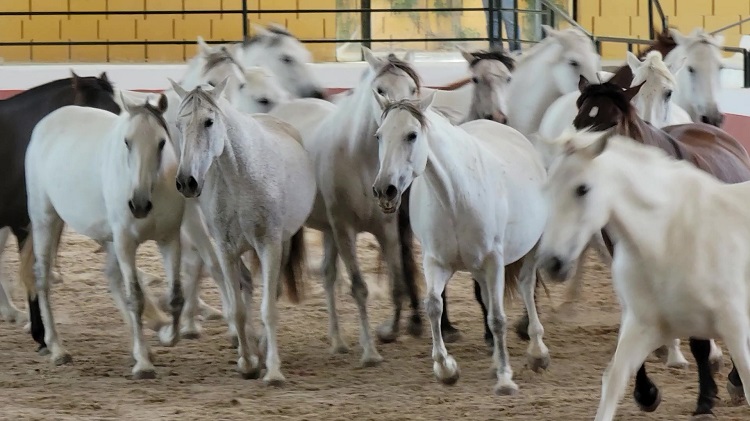
Additional Things to Do
Even if you’re not horse crazy, a visit to Yeguada La Cartuja Hierro del Bocado, where Andalusian horses roam much as they did in the 15th century, is a must-do. You’ll encounter stunning stallions, mares, foals and museum-quality carriages at this picturesque free-range breeding farm, now operated by the government’s heritage preservation division. After all that, an exposition that includes Spanish horse dressage, horse-drawn wagons, enganche racers and unbridled herds with flowing manes and tails is all part of the admission. This insiders’ look into Spain’s horse heritage is worth planning your whole trip around the Saturday-only openings. Online reservations are a must.
During weekdays, head over to The Royal Andalusian School of Equestrian Art for its stables and well-executed museum. Check their events schedule for the live equestrian ballet show “How the Andalusian Horses Dance.” If you fancy a trip to a historic port city, Cádiz is only 30 minutes away.
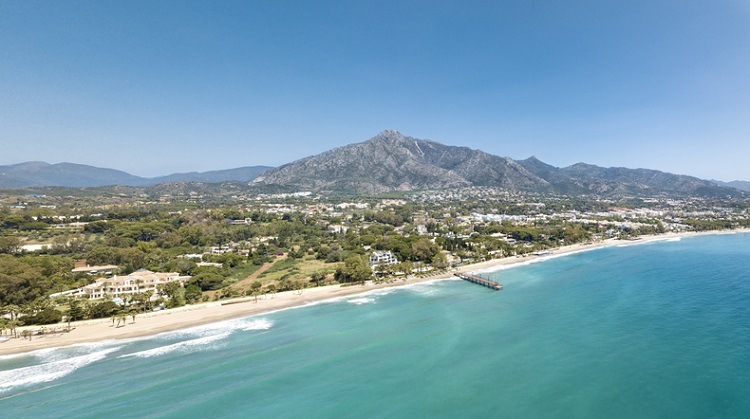
Day Ten: Back to Málaga and Costa del Sol Beaches
If you are driving, head south on the A-383 to Torreguadiaro. From there, take the leisurely A-7 through Mediterranean coastal towns. Stop in Marbella’s charming Old Town for lunch. If your flight out the next day is in the afternoon, Marbella—an hour from the Málaga airport—is an excellent choice for your last bittersweet night in Andalusia.
If you’re taking the train back to Málaga, reserve a room on the beach to enjoy your last night on the stunning Costa del Sol. For a real treat, the Parador de Málaga Golf Club, with its restaurant offering regional gastronomy, is on the beachfront while being a mere 1.8 miles from the Málaga airport. Get airport shuttle service (additional charge) at the beachside Occidental Torremolinos Playa, a splashy, mid-priced option. Or book the affordable Hotel Mediterraneo Carihuela, on the beach with an 18-minute walk to the C-1 bus line to the airport.
Where to Experience Wine
If you’re driving, book the Original Marbella Tapas Adventure, where you’ll taste wine at three bodegas in Old Town. Or, while in Torremolinos, accompany your wine with fresh fish edibles at La Bodega. And, of course, you can always stock up on duty-free wine at the Málaga airport.
Additional Things to Do
Besides beach combing and watching intoxicating sunsets during your Costa del Sol beach overnight, you can look for one of the 100 watchtowers strung out along the coast. As a rule of thumb, Arabs built the oldest towers with rectangular bases. Round-based turrets were made after the Reconquista as lookouts for pirate ships. Six towers are located around Marbella.
Featured image courtesy Stacey Wittig.
You are reading “Southern Spain Itinerary: 10 Perfect Days in Andalusia” Back To Top
things to do in Andalusia, Southern Spain travel guide, 10 days in southern Spain: top travel destinations in Spain
If you enjoyed this guide, make sure you register to become a Winetraveler for free! You’ll get access to all of our content and interact with other Winetravelers and for travel inspiration around the world. Be sure to follow along with us on Instagram as we continue to feature more exciting destinations.
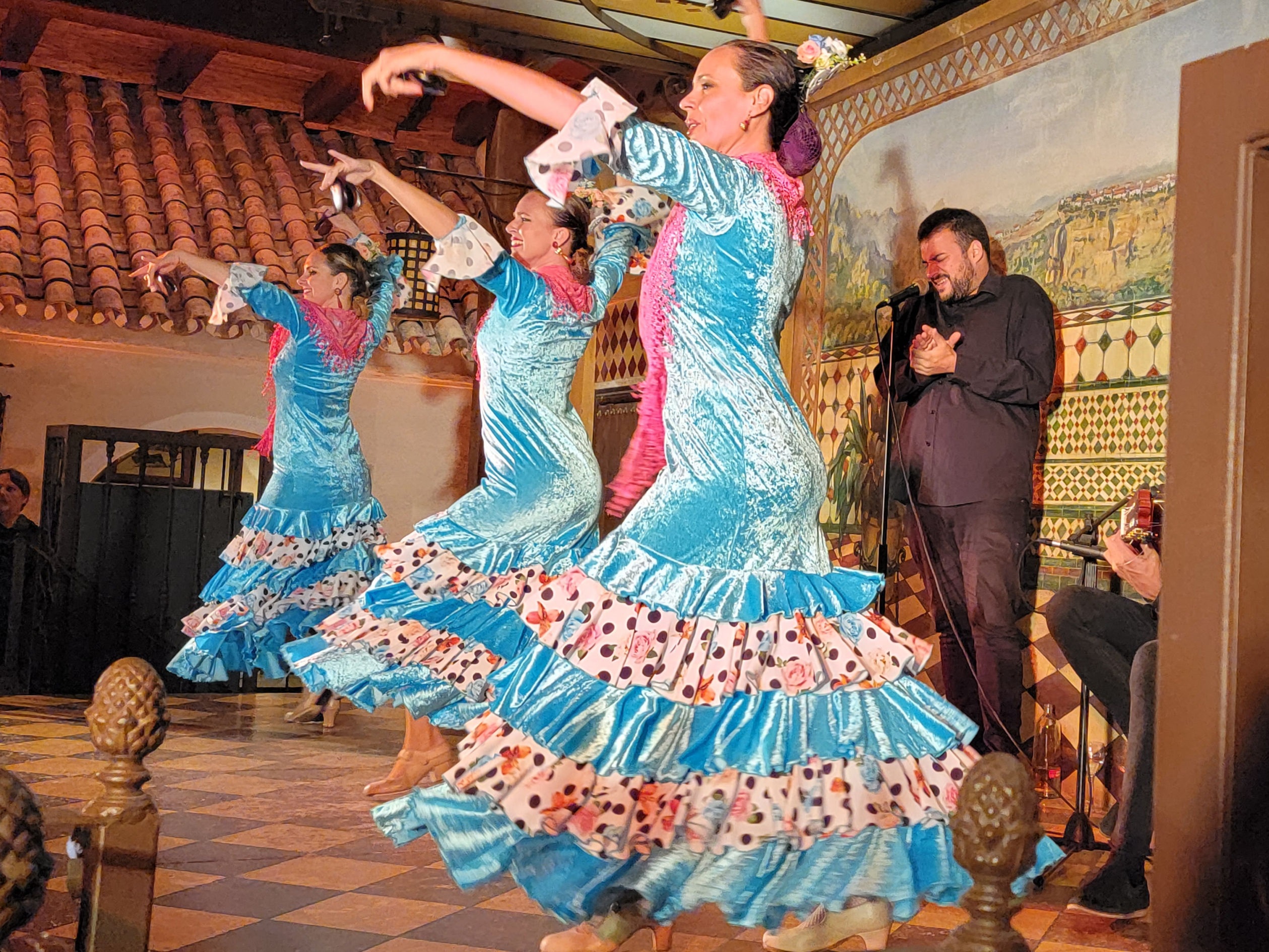
I love this area of Spain and you have a list of great places to see!!!
Thanks, Kevin! It was fun to put together an itinerary of one of my favorite parts of Spain. Can’t wait to go back for more!